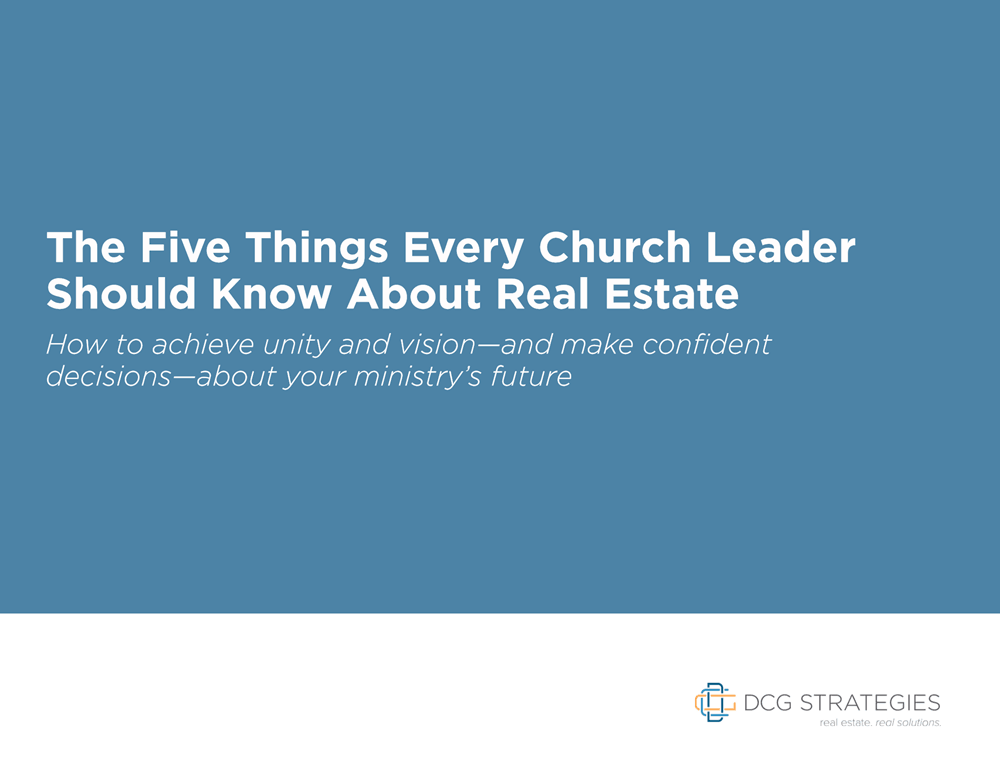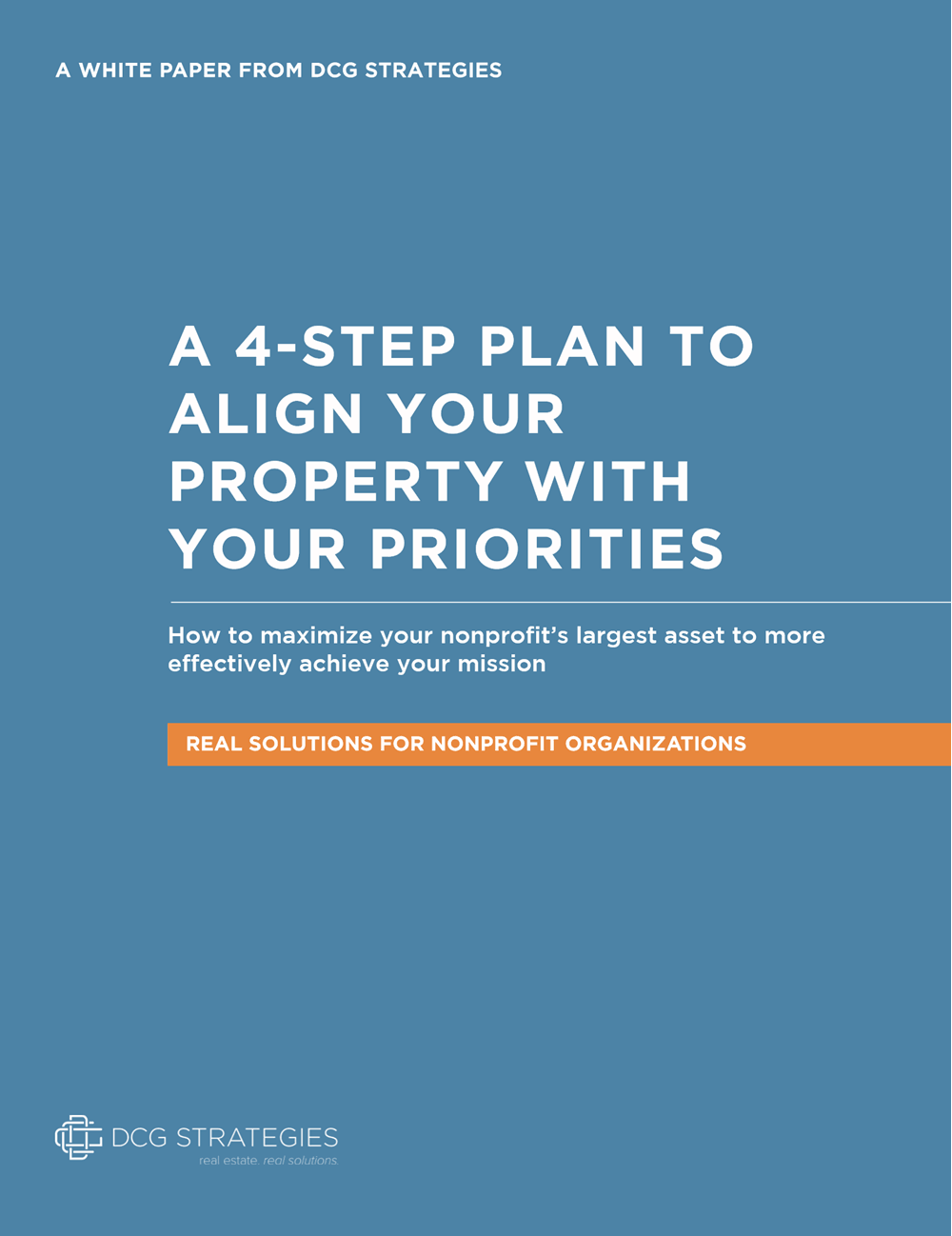Some churches have to decide between building a new church or buying a preexisting building for their permanent home. Both paths can make sense. Credit: Flickr CC user Rick Camacho
A couple of years ago, a church in Clayton, California, announced to its members that it was moving out of its downtown building. They had plans to build a new a church on land they owned elsewhere in the city. Clearly, this was a huge move. This plan raised enough questions among the members that the elders ultimately published a public letter to explain their reasons.
As it turned out, the congregation had a nice property that overlooked the downtown area in which it was currently located. Moving to this new property would allow the church to maintain its presence near the city center. It was also twice as big as its existing property, so it could accommodate multiple, single-story buildings, which is how the congregation envisioned its new campus. The other property had half the acreage. If it were to expand, the church would have to build multi-storied buildings instead. Secondly, the new location was also close to an elementary school, near to the young parents that they hoped to attract. Lastly, the church had the opportunity to sell its existing downtown property to the city for a good price, thus providing it with enough money to seed the building fund for the new construction project.
For all these reasons, it made sense for the church to build a new space, and so the congregation in Clayton took that path. In other cases, churches have gone the other route and purchased an existing building.
Chances are good that a church eventually will come to this fork in the road. Which route — building a new church vs. buying a church – makes more sense? Ultimately, the answer depends on the congregation.
The Advantages of Building a Church
The advantages of building a new church are fairly obvious. A church can design the new building to fit its mission and programs. Although congregations usually consider the building secondary to spreading the faith, each church has a certain style. It makes it easier when the design and layout of a building properly suits the flavor of the church. Also, the new building can be sized appropriately and built to accommodate growth. In designing a new building, the congregation is limited only by its budget, the size and topography of the land, and the town’s planning and zoning requirements. What’s more, the building is new, meaning it can be built with energy efficiencies and wired with the latest technologies.
Many churches, however, decide to go the other route. Often newly planted churches take over buildings from congregations that have lost membership and closed or moved on. Churches have been losing membership across the country and hundreds of churches close every year. Some of these buildings are available at a good price. One small Baltimore-area church that moved into a vacated church when the congregation consisted of just 10 families at the time. If the members had waited to raise the money to build a new facility, they could have been stuck leasing for years.
Why Some Churches Buy Non-Traditional Buildings
Congregations have also redefined what a church building can be. A church can be a former warehouse, a school, and even a factory. In California, some churches have bought decidedly non-traditional buildings and repurposed them. In Modesto, an Anglican church bought a former food testing laboratory. The church paid nearly $1 million for the property and will spend another $1.75 million renovating the facility. In return, though, the church obtained a building with nearly 15,000 square feet, which was enough to accommodate a large congregation of up 500 families. The property also had a parking lot and was centrally located.
Other churches have stretched the definition even more. In Kingsburg, near Fresno, a church bought a former Del Monte plant building for its 300 members. Although the congregation wasn’t entirely sure how it would use all the space, it did get the keys to a huge facility that sat on more than 50 acres.
The point is that both of these directions can make sense. Purchasing an existing building can save considerable time. A congregation, in some cases, can move right into its permanent home and begin setting its roots down immediately. Also, existing buildings usually have the needed infrastructure, such as water and sewer and electrical connections. Another big advantage to purchasing a building is that the government approval process is typically less onerous. In many cases, the church is moving into an existing church, which has already been zoned and approved for that purpose.
A congregation has much to consider when planning a permanent home and should explore all of its options. Even if the congregation favors building a new church, the leadership should not pass up the opportunity to study the available existing buildings to determine if one is suitable. This could save millions of dollars and cut years off the timeline to a permanent home. At the same time, a church shouldn’t necessarily buy a building to avoid building a new one. If the church chooses the wrong building in the wrong location, it could cost them in the long run. As always, a church shouldn’t attempt to do this evaluation alone. An experienced commercial real estate consultant can assist in doing a full property search and evaluate the costs and benefits of both major options.
If your congregation is planning to buy or build a new facility, you don’t have to go it alone. You can get a thorough analysis of the market from a consultant whose community values align with your own. Contact DCG Strategies today to learn more.





